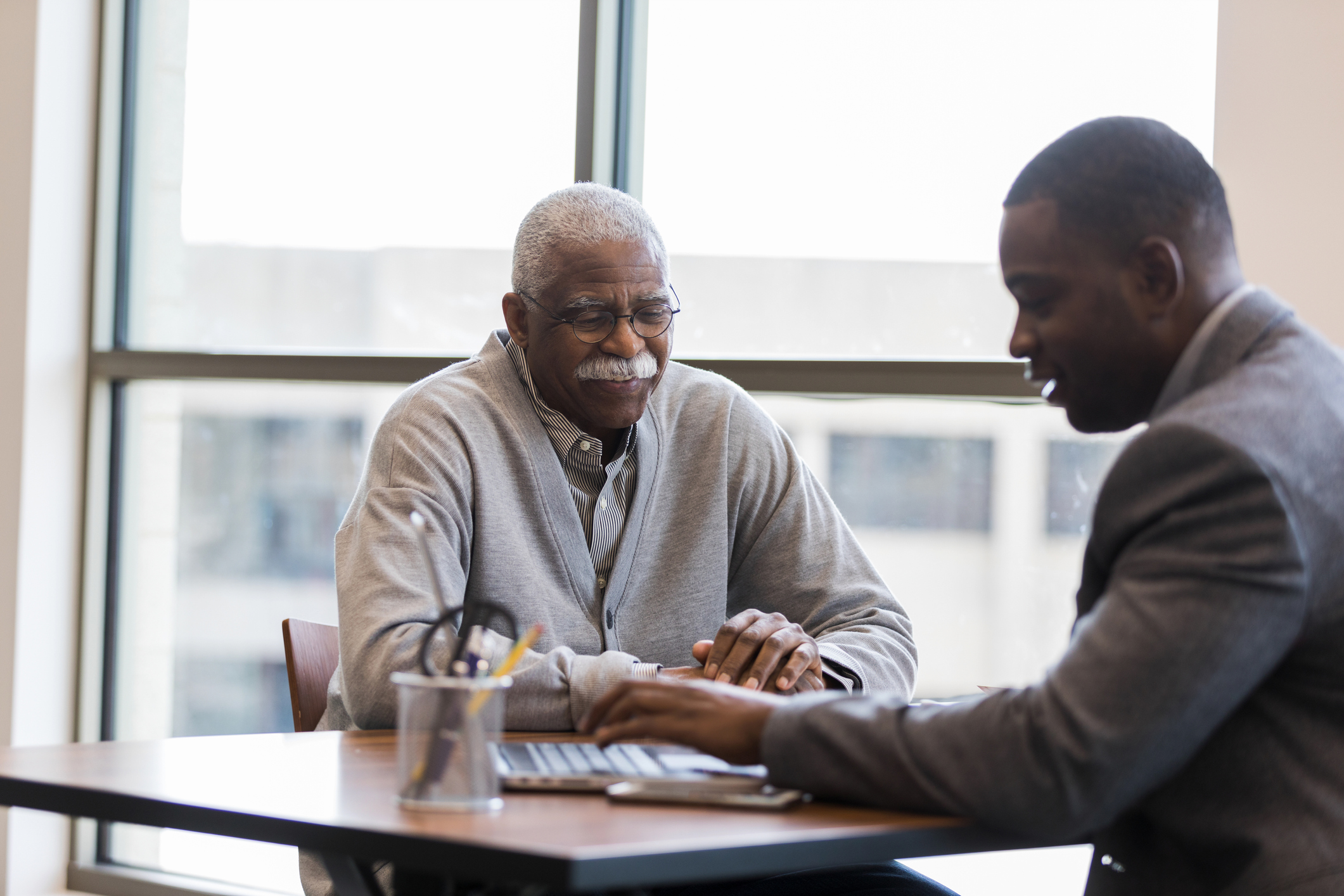Author: Christian González-Rivera, Director of Strategic Policy Initiatives, Brookdale Center for Healthy Aging
The COVID-19 pandemic has been particularly difficult for older adults. The stay-at-home orders have placed stress on the social bonds that define the lives of many older Americans, who are already marginalized in many communities. Notably, as death rates plummet and vaccinations rise across the country, community centers that serve older adults remain closed while bars, restaurants, parks, houses of  worship, and many other gathering places have reopened.
worship, and many other gathering places have reopened.
Even while their physical spaces remain closed, center staff have been serving their older members throughout the pandemic. They have been calling them regularly to check on their wellbeing, hosting virtual or telephonic events to keep them engaged, and passing along important health information. Though senior centers had to shift quickly to adapt to remote conditions, their primary goal still shone through: to prevent older adults from becoming isolated by connecting them to broader society.
The pandemic has provided an opportunity to extend the role of senior centers as a bridge between marginalized older adults and society. Before the pandemic, centers across the country focused primarily on delivering contracted services. They were asked to be cafeterias, benefits counselors, mental health counselors, recreation centers, wellness centers, art studios, colleges, and corner cafés for people ages 60 to 100 and beyond. This work, carried out by hundreds of dedicated staff members at nonprofits and government agencies, provided a lifeline for thousands of older adults.
Yet by casting older adults primarily as service recipients, senior centers as currently structured are missing an opportunity to catalyze the transformation of their communities into places that empower their members to age well. Senior centers should be a platform to unleash the power of older Americans, not a place where they receive a segregated set of services. In this spirit, perhaps even the concept of the “senior center” should give way to a community center that centers both the needs of older adults and the capacities they have to support themselves and their communities.
Community centers that center older adults should serve two functions. First, they should be places that facilitate access to the resources that their wider communities have to offer. Second, they should be places that unleash older adults’ power to use their knowledge, skills, and energy to support their fellow community members, regardless of age.
A Portal to the City

While community centers that center older adults would provide services that are critical for the thousands of older adults who take advantage of them, they could not be supported by the meager budgets available to Area Agencies on Aging alone. Imagine a future where parks and recreation departments fund and collaborate with centers to provide exercise classes to older adults. And where the local social services agencies provide funding for benefits counselors. And where health departments help design and provide wellness activities and link older adults to the mental health services system. And where employment training programs link to their older clients. And where centers join forces with public libraries, museums, colleges, and nonprofit arts organizations to provide cultural offerings, leveraging the public and private funding that those institutions have at their disposal. And where center staff members work with providers of virtual services of all kinds to make their programming accessible to older adults.
The Area Agencies on Aging’s primary role should be to facilitate those partnerships, helping public and private partners to understand and successfully meet the needs and desires of older adults. Older adults themselves, not prescriptive government contracts, should determine what goes on in individual community centers. The community center of the future should be a space where older adults help each other and government helps them do that. But first, the centers have to change from seeing themselves as service providers to seeing themselves as neighborhood hubs, facilitating the mobilization of the resources their members and the wider community have to offer.
Leveraging existing resources to benefit older adults is more efficient and expansive than expecting community centers to provide everything themselves. This is the difference between rolling a library cart of books into a room and helping members get library cards and get to the library.
A Space in Service to the Whole Community
To paraphrase former President John F. Kennedy, community centers that center older adults should also ask what older Americans can do for their communities.
Imagine a future where centers with kitchens were not solely dependent on the Older Americans Act funds for their lunch money but could sign a contract with their local homeless services agencies and organizations to cook meals for the homeless. Or they could partner with youth development agencies or education departments to run cooking classes and nutrition education programs for young people that are led by older adults. Or they could contract with housing agencies to provide food for social activities led by older residents of public housing and Section 202 buildings. Or with parks and recreation agencies to provide snacks and refreshments for older adults participating in walking clubs or other exercise programs. Most senior center kitchens sit idle when not used for lunch service. Why not put them to work for their entire communities and engage older adults in the process?

Currently, some senior centers encourage their participants to share their skills and knowledge by leading classes and workshops for their peers within the walls of the center. But why stop there? Older adults have a lot to offer younger people, too. Imagine a future where anyone could go to a community center to take classes on cooking, appliance repair, storytelling, sewing, gardening, and lots of other “old school” DIY and maker skills. And imagine a center having the resources to help older adults turn their skills into a service or perhaps even a business enterprise or a job. And where artists, teachers, and entrepreneurs of all ages could come and lead an activity, conduct a focus group on their product or service, or try out a lesson or group activity. What if centers were maker spaces where older adults could showcase and use the skills that they are seldom invited to use out in the world?
This model of community center could also be of service during and after hurricanes, pandemics, or other calamities. The best research on emergency management says that communities need resource hubs that serve as sources of supplies and information as well as base camps for local emergency response. For instance, health departments can designate community centers as official distribution points for PPE. Social services agencies could locate benefits counselors in community centers to help provide economic support to displaced workers. In case of a power outage, centers could serve as charging stations. They already serve as cooling centers during heat waves, and they are already a resource for older adults rendered vulnerable by a disaster. But they can also be an organizing platform for the many other older adults—and people of all ages—taking action to help their neighbors.
Area Agencies on Aging cannot take on this task of transforming centers alone. City, state, and federal agencies that work in communities across the country must cooperate to make their cities age-friendly. Age-friendly places are great places to live because they provide older adults with opportunities to feel a sense of purpose, particularly people who have had few resources and opportunities in their lives. The COVID-19 pandemic has been reminding us that people do not live their lives in the silos created by the government. Accordingly, older adult community centers should not be a project of a single agency. This arrangement does a disservice to older Americans by empowering them with just the sliver of services that a small agency budget can supply.
